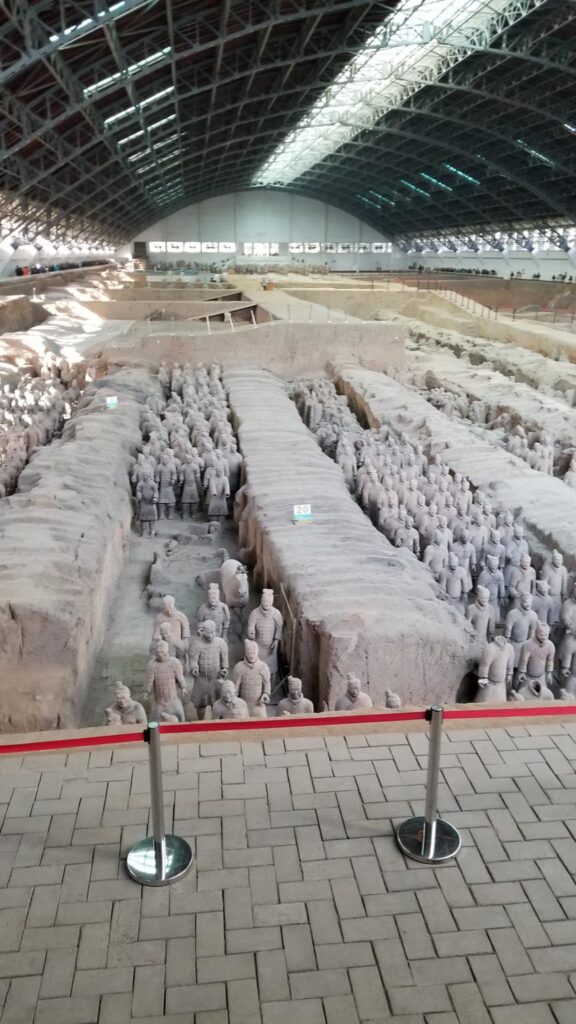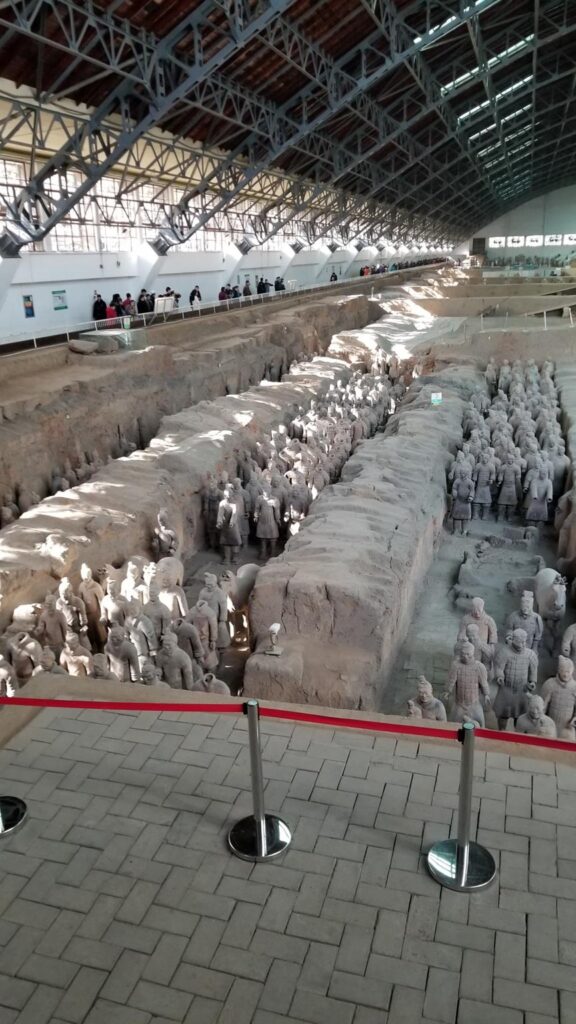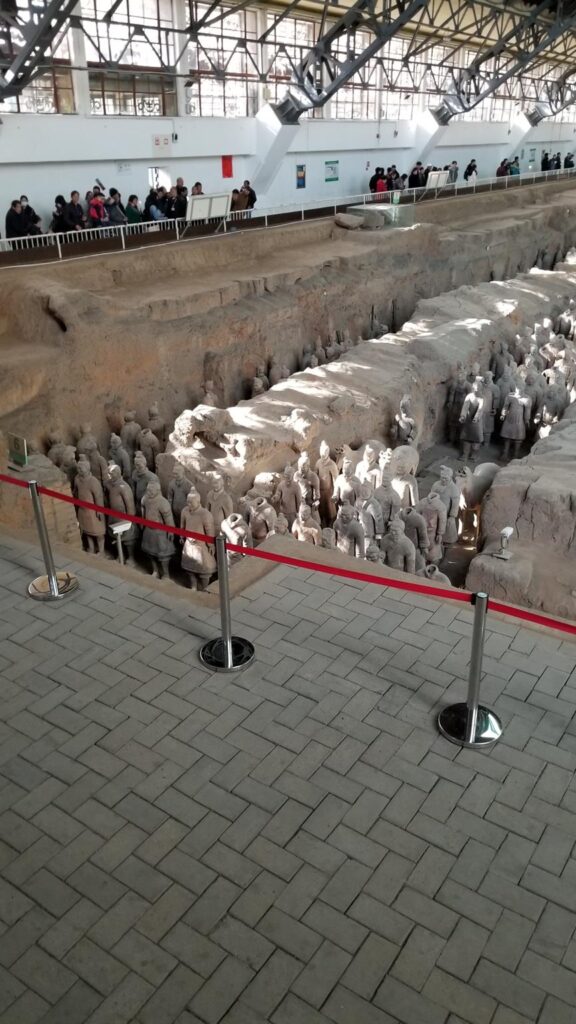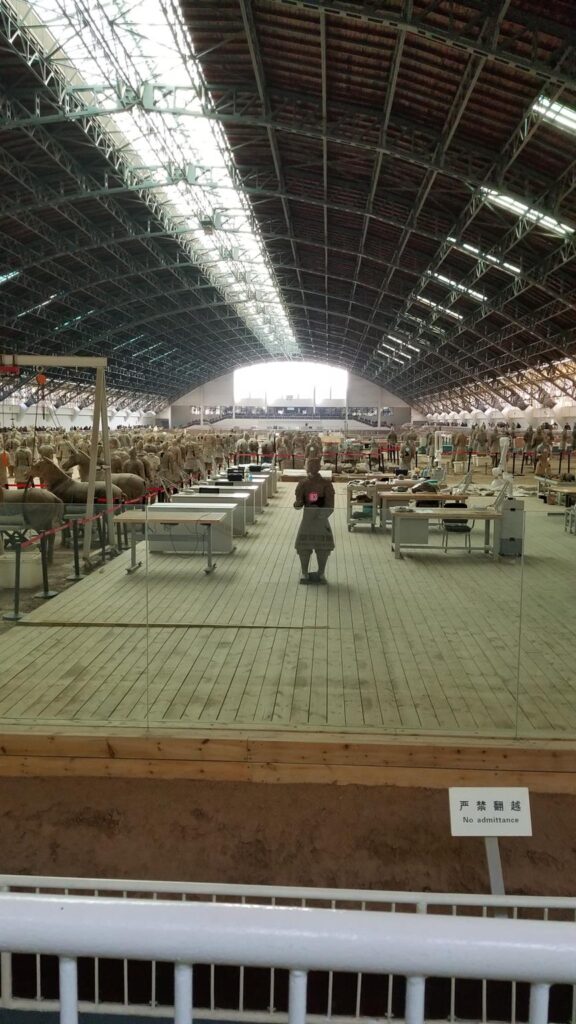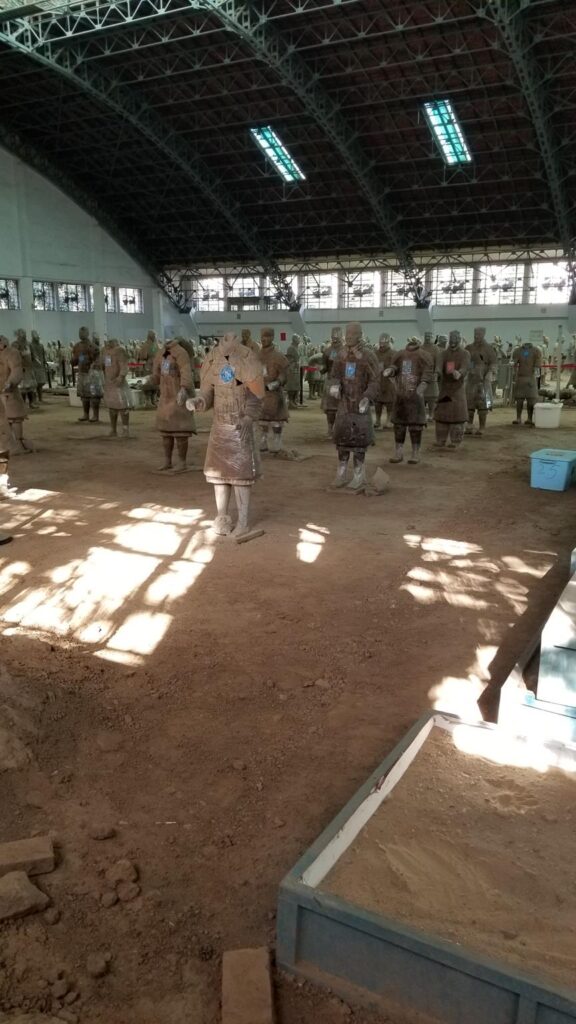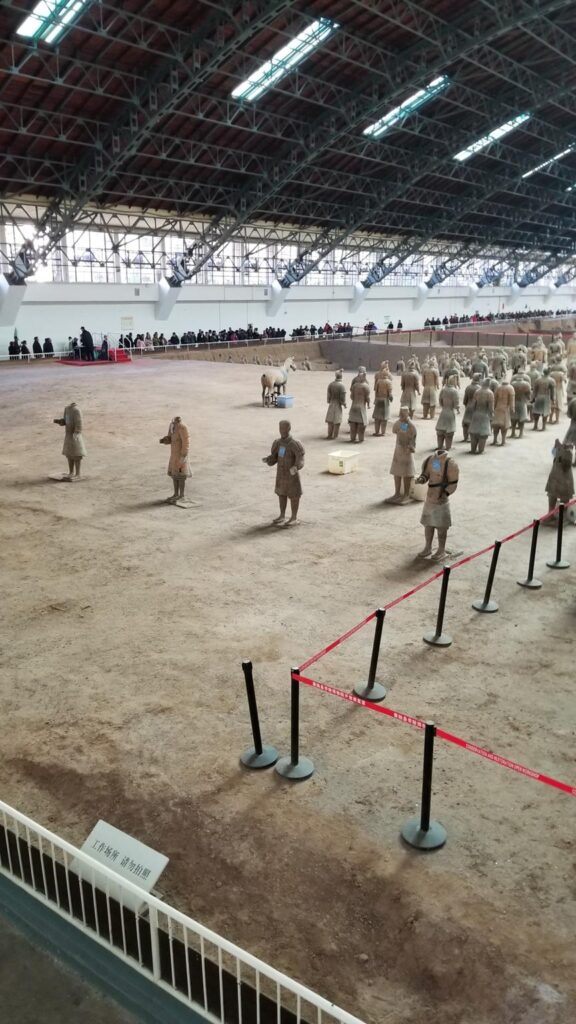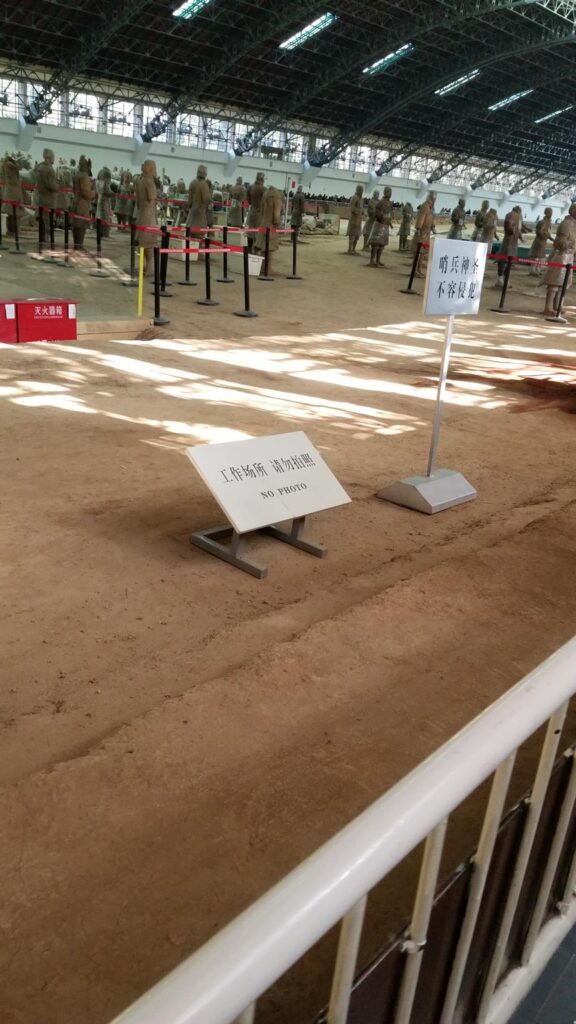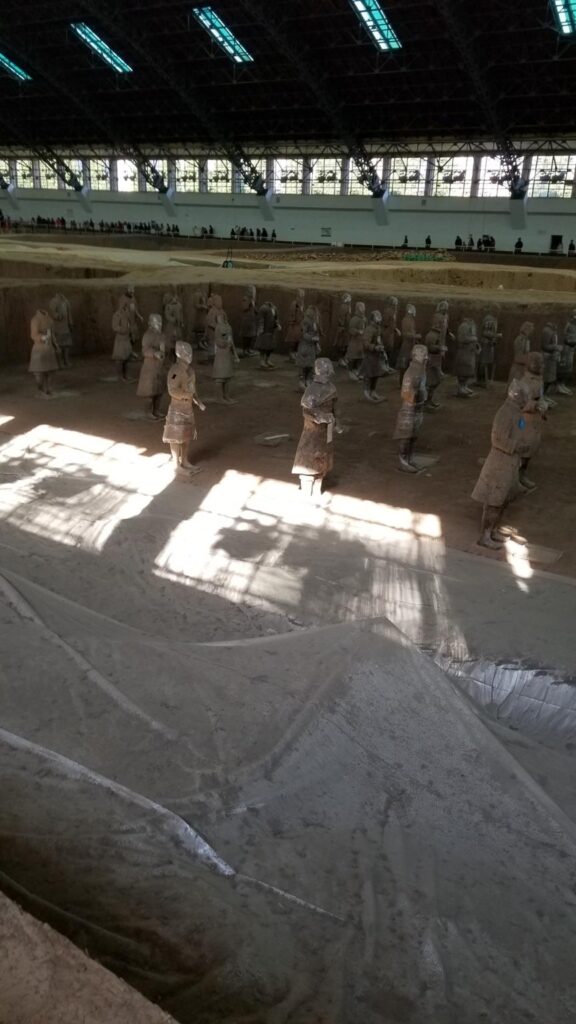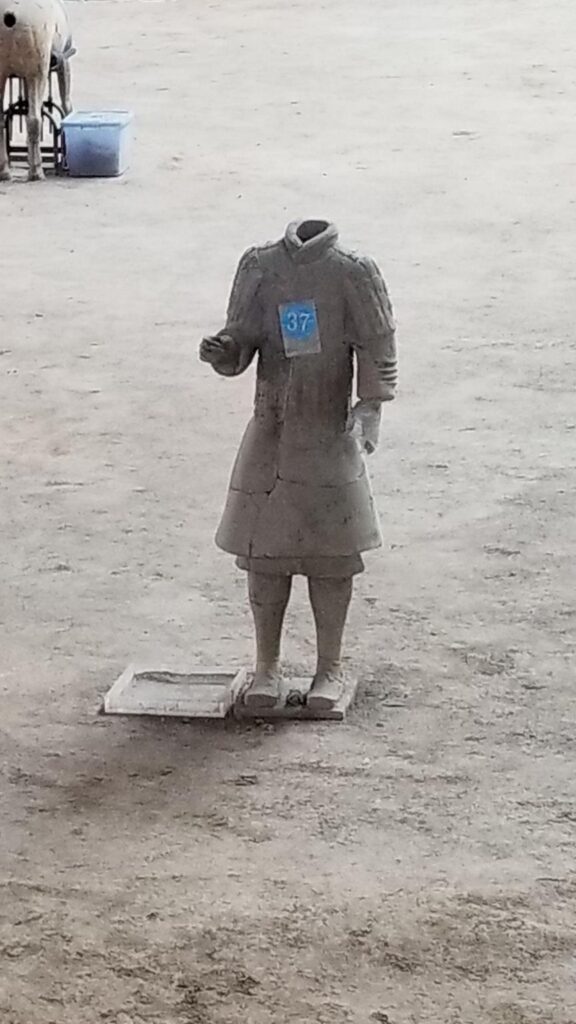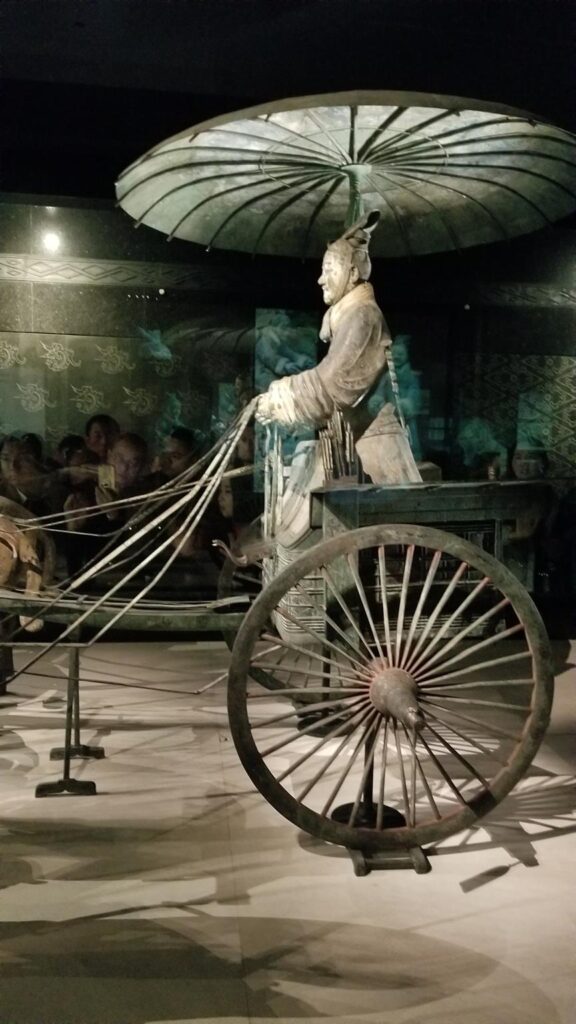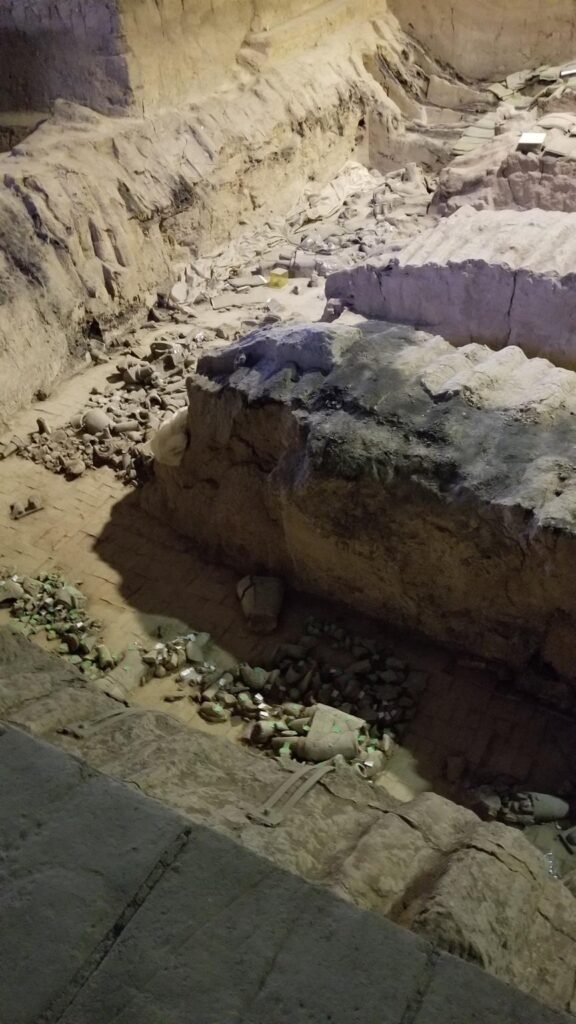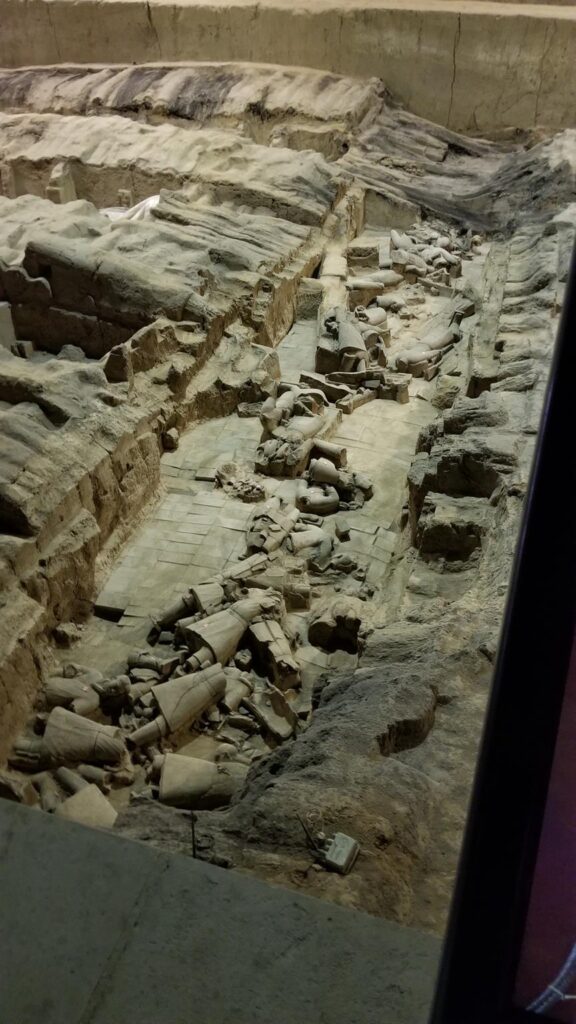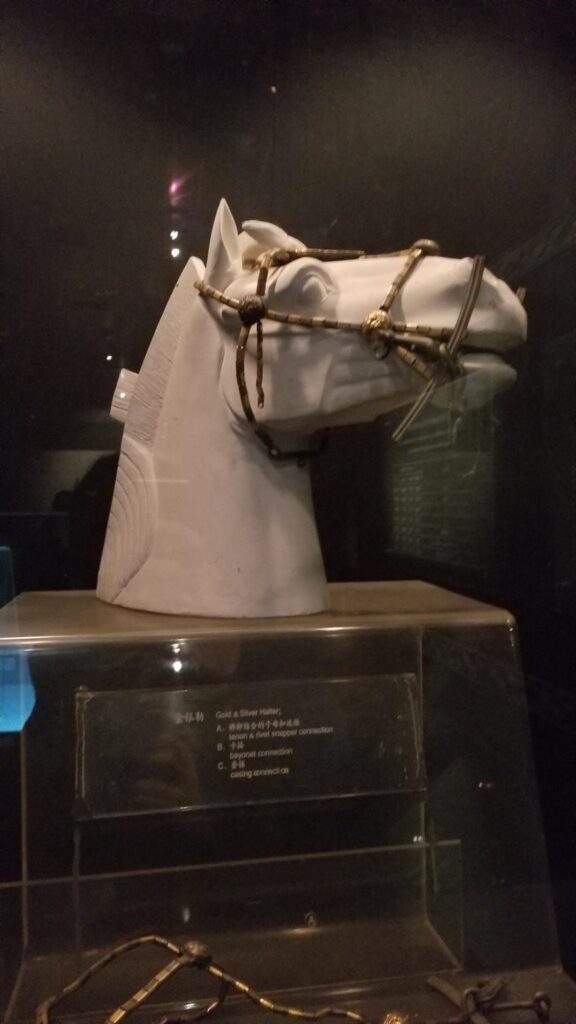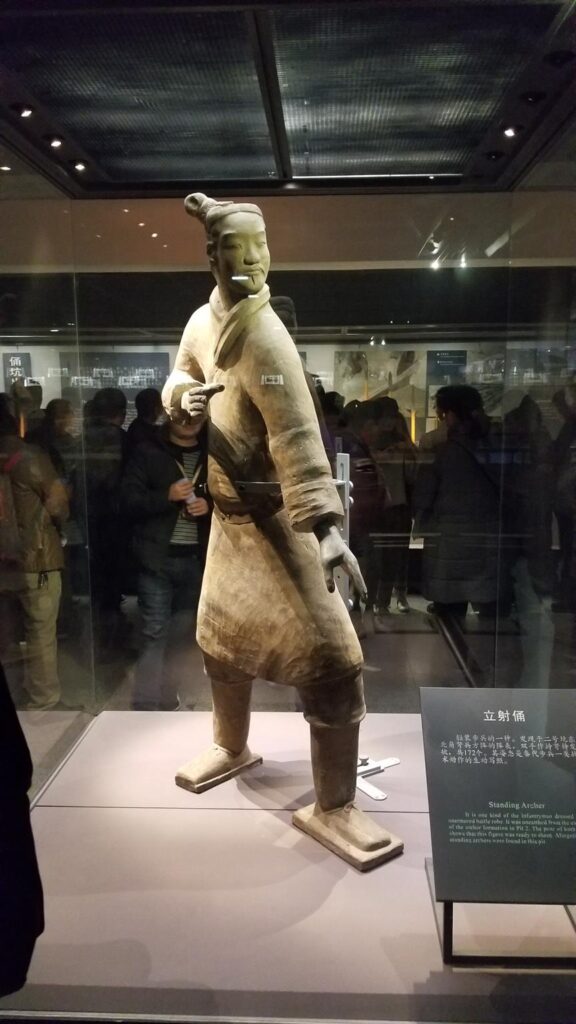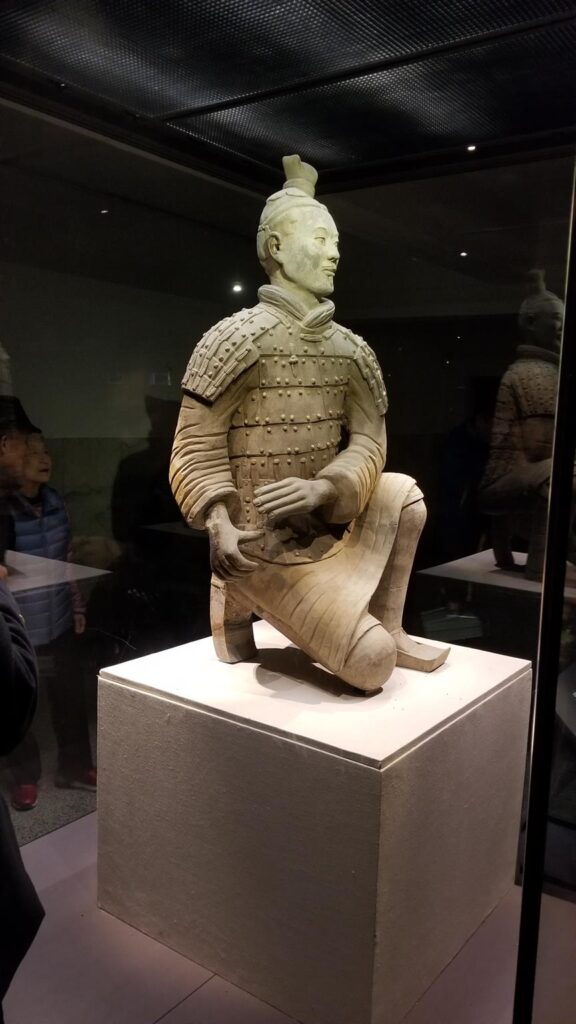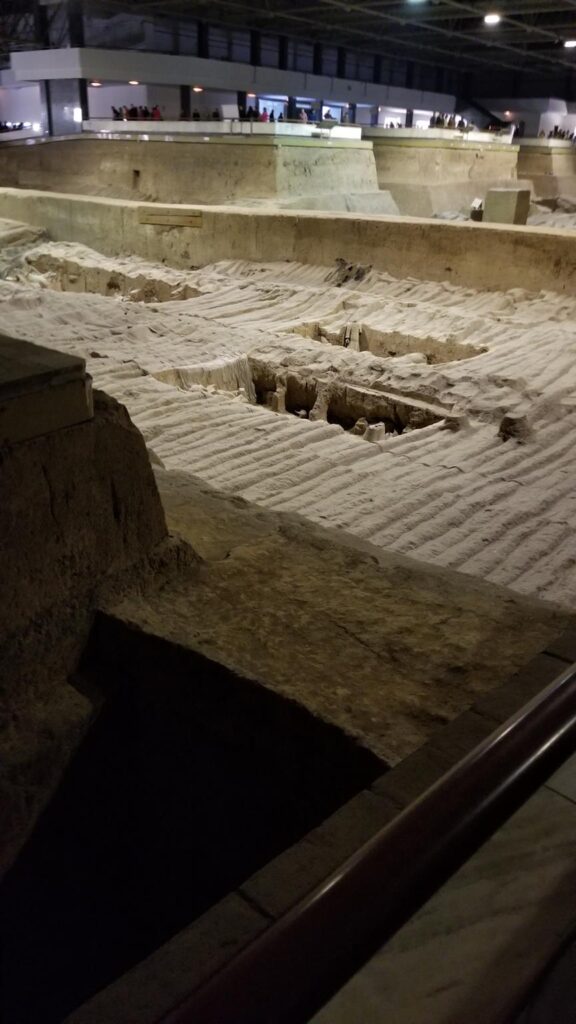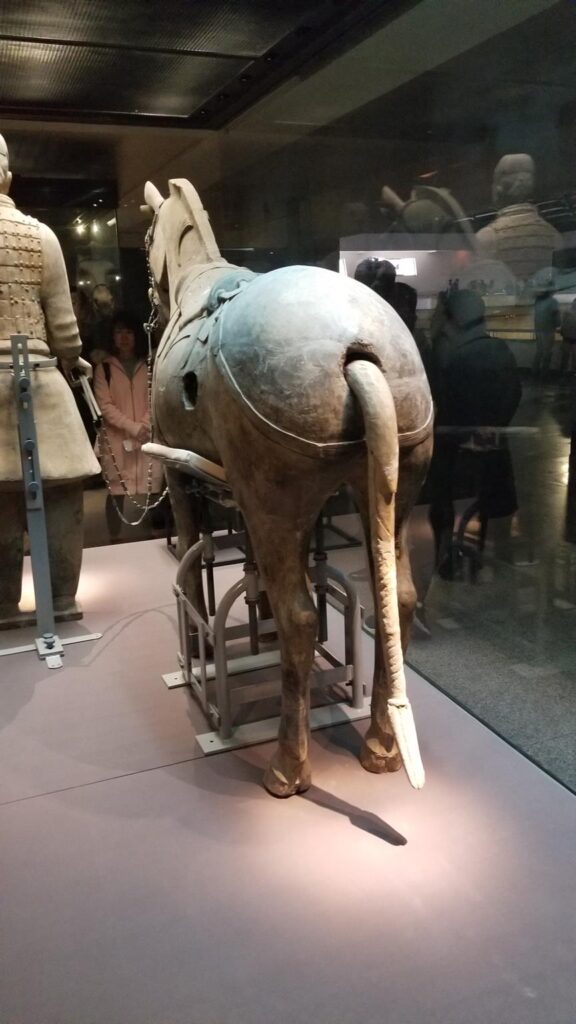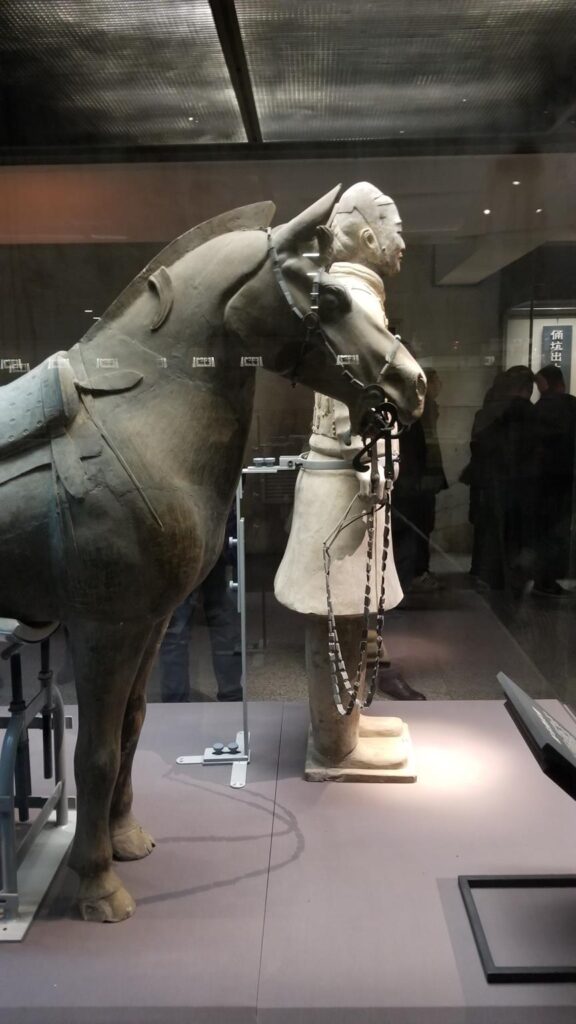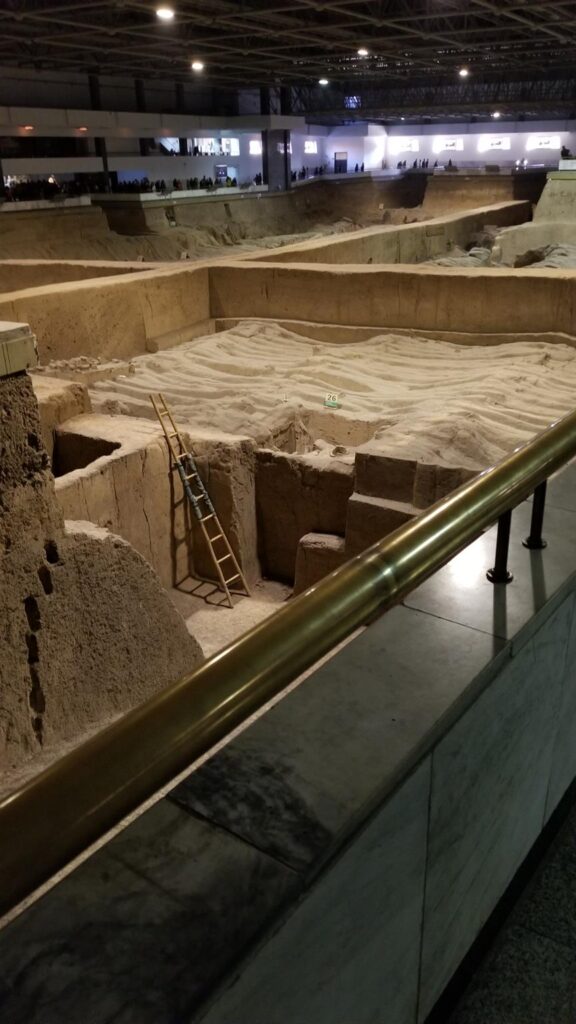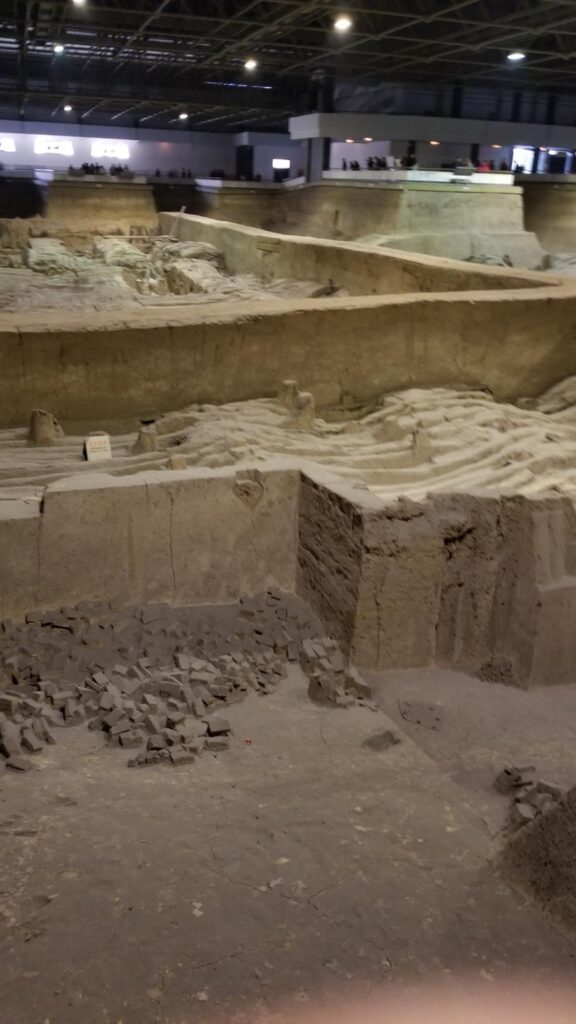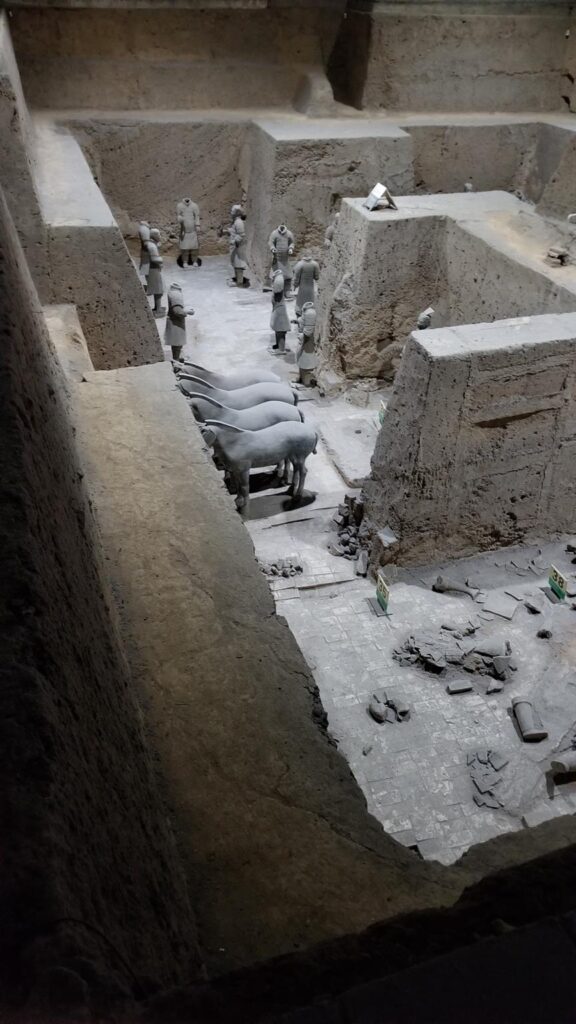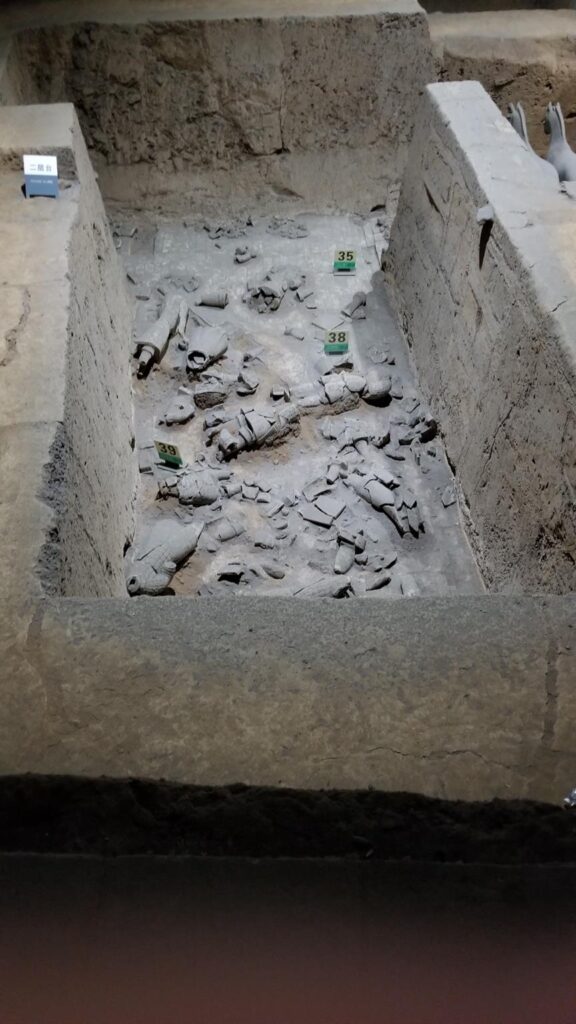Preface: This blog will mostly be one giant writing piece on the Terra Cotta warriors – if you have visited them before or aren’t particularly interested in the 8th wonder of the world, feel free to skim or skip this entry! Just a warning that it’s very history heavy.
Approximately 2,200 years ago, a very young emperor by the name of Qin ascended the throne and 700,000 workers set to the task of building the greatest collection of terracotta the planet has ever seen. The term terracotta stems from its Latin root, ‘terra’, or ‘earth’, and ‘cocta’, which means ‘cooked’. As such, its present translation is essentially “baked earth.” In Chinese, a simpler term is used to describe the site, “兵馬俑” which translates to “Soldier and horse funerary statues.”
Built to protect the mausoleum of the emperor and his treasures even in the afterlife, the workers dug these gigantic pits and created life-sized replicas of these statues, including soldiers, horses, and even the chariots that were characteristic of the army formation the Qin dynasty was famous for. According to the ancient historian Sima Qian, the project eventually consumed the lives of every single craftsmen that worked on it, either due to mercury poisoning because they poured it in the pits to simulate rivers, or they were ordered to be entombed with the emperor when he died because nobody that knew about the secrets of the tomb could be allowed to live and potentially divulge its secrets. It is a brutal account of what is now considered an 8th wonder of the world (an unofficial title given to projects of comparable stature to the original seven wonders), but as with all legends, there is some truth, and the discovery of substantial traces of mercury today seems to corroborate Sima’s story.
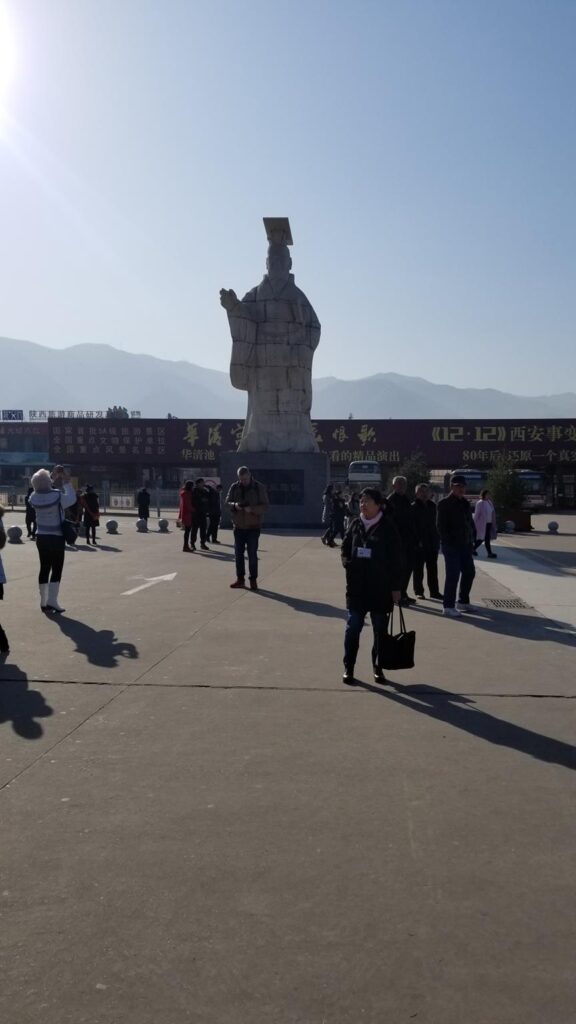
Today, the site is one of the major tourist hot spots in Xi’an, and rightfully so. The three pits full of excavated soldiers, weapons, and other treasures as well as the tomb of the emperor are a true sight to behold. Luckily, because I was travelling by myself I was able to slip inbetween groups of tourists who were with their tour guides, and because I could understand both languages it was easy to glean random tidbits of information here and there about the site. None of it was too shocking though, although I did learn about a pretty tragic story where one of the tourist’s grandparent suffered from a skiing accident and became paralyzed, and that’s why he started touring the world because he realized that life is short and you should experience as much of it as you can, while you still can. It’s a good lesson to takeaway that I wasn’t expecting, certainly not from a bunch of clay statues.
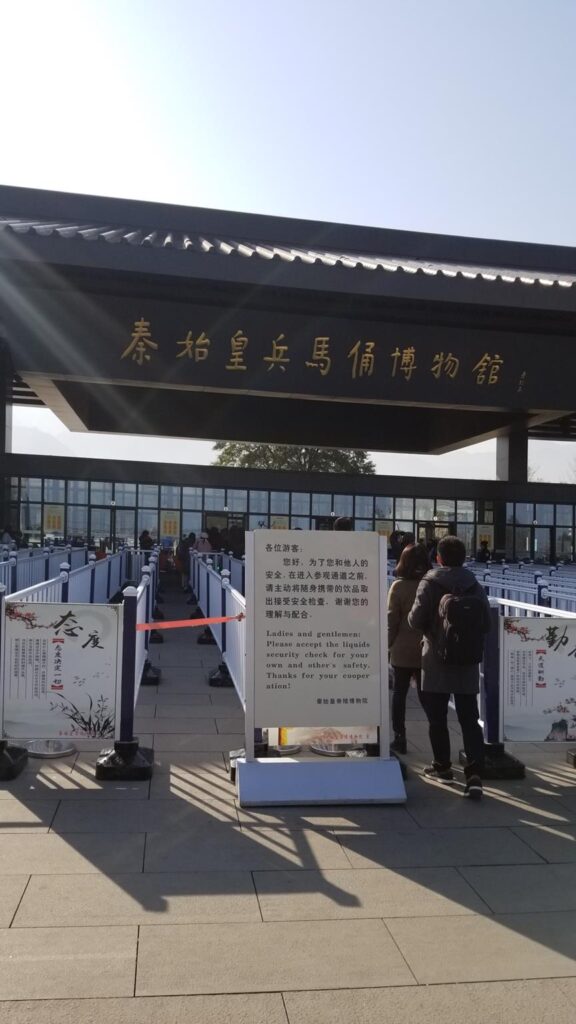
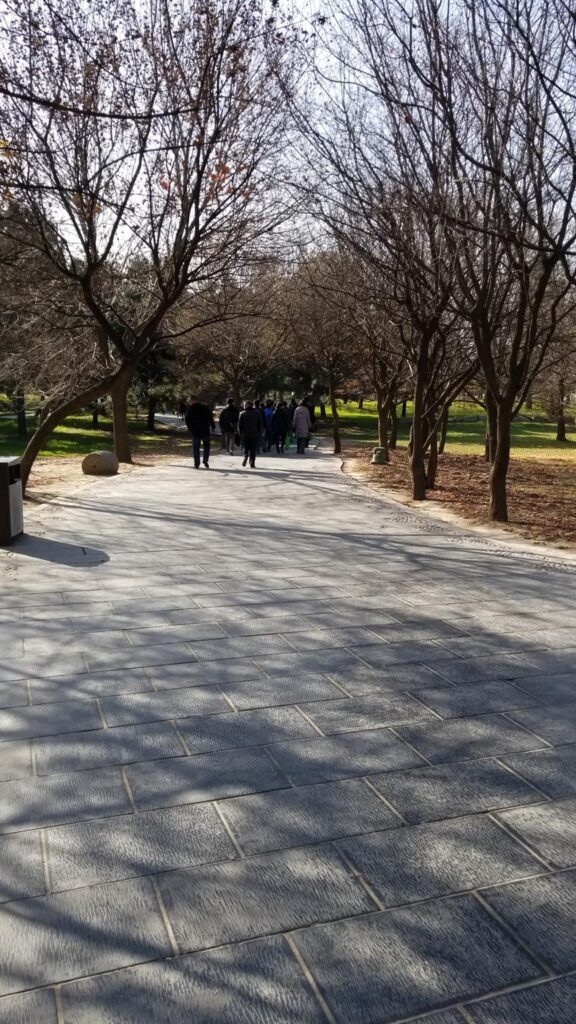
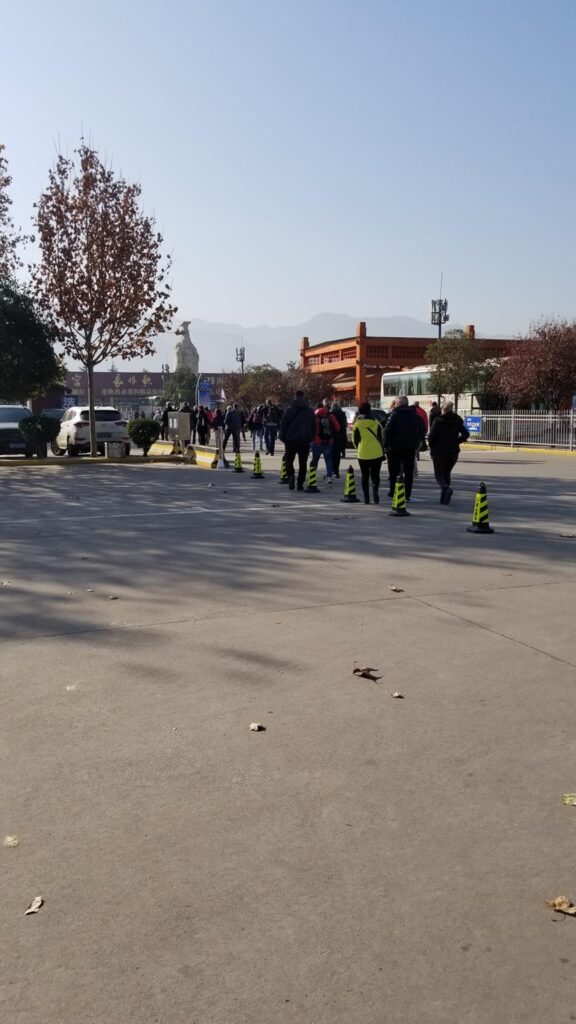
The Terracotta army is quite astounding when you enter the first pit. This one is dedicated to depicting the standard Qin army formation. Essentially, you have a rectangle formation, with archers stationed at the front, followed by lines of infantry, and then chariots manned by officers and generals sprinkled about. The amount of soldiers excavated total about 6,000 spanning an area of around 14,000 square meters, which translates to, as one tour guide said, the width of 1 and a half football fields. Now I’m not sure if she was referring to American football or European football but based on what I could glean from their accents it seemed that they were from the States. In any case, the area was quite large, and although the front appeared well maintained, the back of the pit was reserved for repairs and refurbishment of the soldiers that were broken during the excavation.
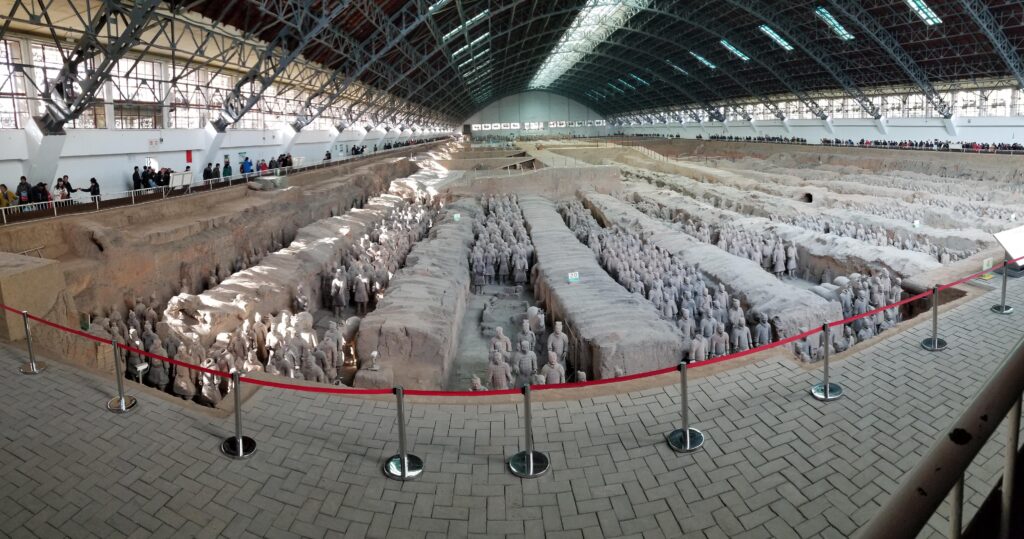
As it turns out, paint and clay don’t preserve that well after twenty-two centuries – the paint is said to flake and disintegrate only a few seconds after being exposed to air, which is why all the soldiers have that distinct color of bronze. Despite that, you’d be hard pressed to find two similar faces on these soldiers, save for the fact that the heads have fallen off of some them. The craftsmen at the time were extremely careful in their attention to detail to make the statues more impressive to demonstrate the power of the Qin army.
Interestingly enough, the entire site started at this pit, where some farmers were digging a well. When they stumbled upon some weird colored soil, they reported it to local authorities, which apparently drew journalists to the area, which then drew attention from the government who eventually setup an entire excavation team that developed the site into what is now recognized worldwide. Today, excavation work still isn’t even close to being complete – only 1,000 soldiers of the said 6,000 are said to have been unearthed, but it’s unclear whether the rest will ever see the light of day because the technology we have right now isn’t enough to excavate them without causing major damage to these artifacts.
Thankfully, the site is setup so that as you exit a pit you’re right next to the entrance of the next one. The second and third pits are smaller in scope, with the third one boasting a whopping 68 soldiers, 4 horses, and a grand total of one chariot. The soldiers found in this one were however facing each other, which suggested that it was most likely where soldiers congregated to make plans or to converse, all speculation of course.
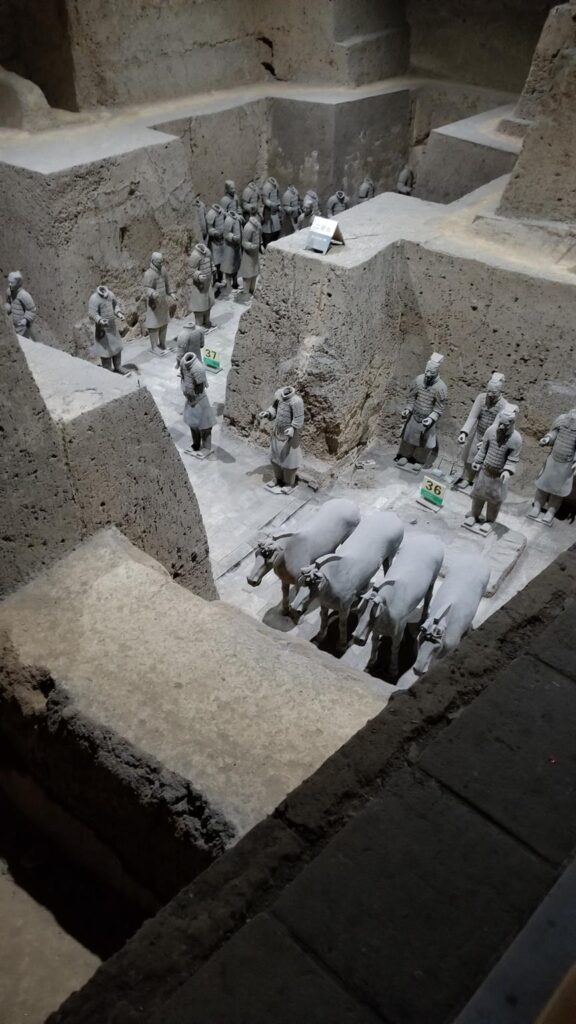
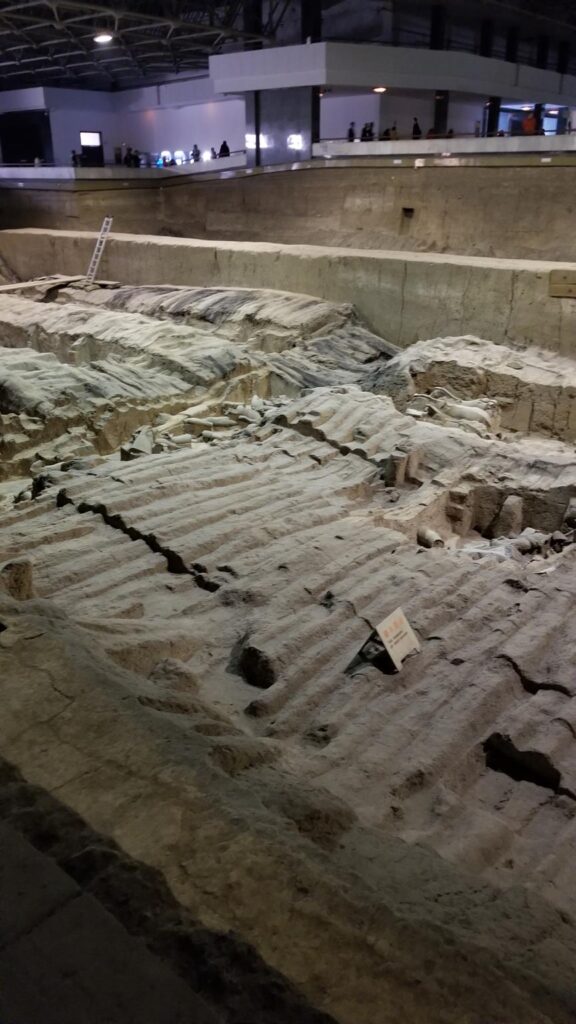
The second pit contained the most comprehensive and complete collection of the units that would have existed in the actual army, with numerous horses, chariots, and archers. Individual soldiers that were kept in better condition were in their own display cases for closer inspection. You could also find different types of each unit, archers that either stood up or knelt, as well as the generals who were behemoths compared to the already larger than life sized soldiers (the shortest one found was 1.78m, with an average height of 1.9m).
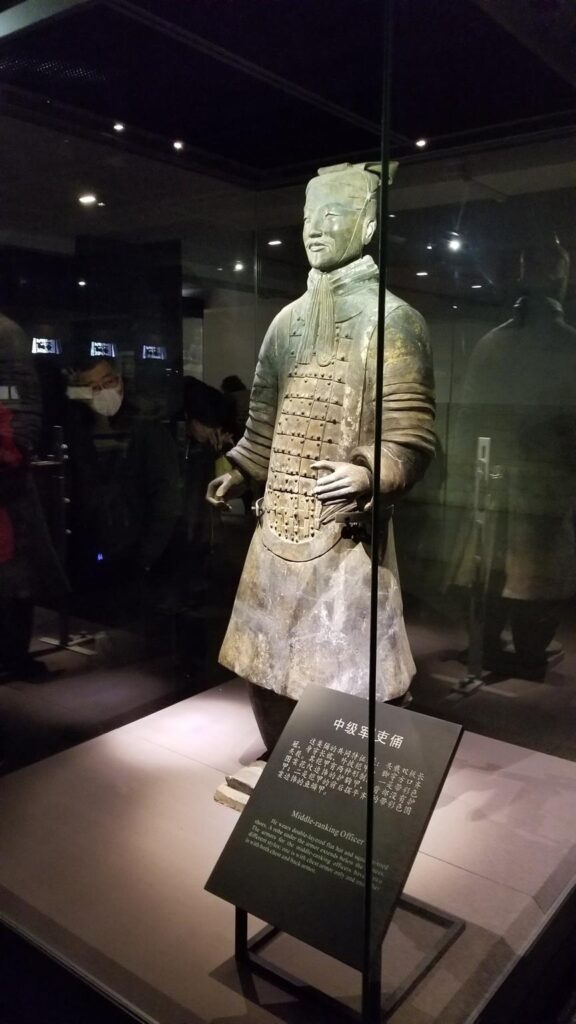
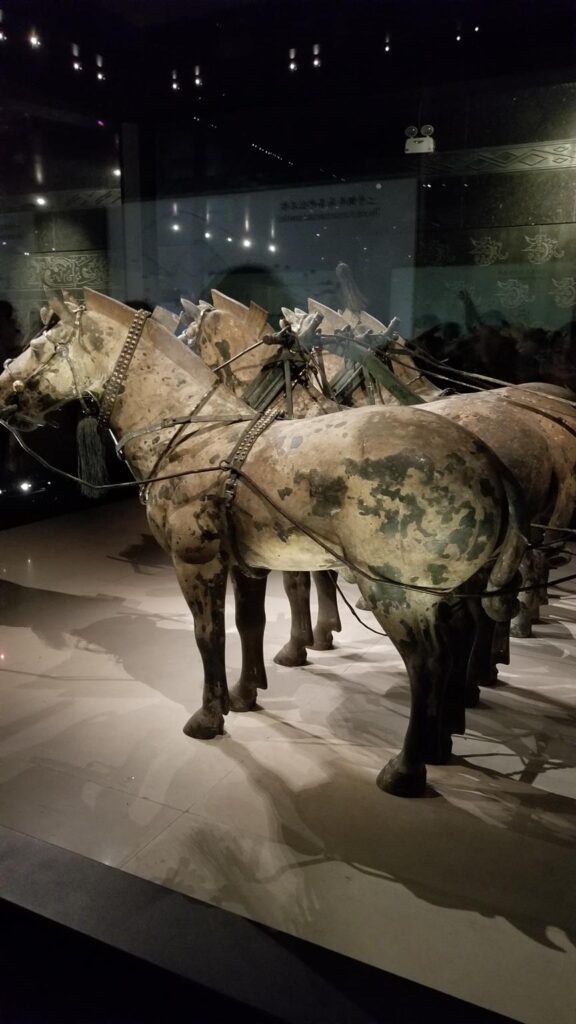
After the visit to the pits you have a choice of visiting Qin Shi Huang’s Mausoleum, or Lishan Garden. Again however due to technological concerns about damage with the excavation, the tomb itself has not been opened yet, but several smaller pits were excavated with civilian statues depicting acrobatics and the like, but it was nowhere near as impressive as the previous pits, and also a lot of places forbade photos. If visiting Xi’an and you are strapped for time, I would probably just skip this until they actually do excavate it or somehow we’re able to see it without disturbing the mound above. That will be truly be a sight to behold as sonar readings indicate it is almost 10 times as deep as the pits, and covers a much wider area as well with many of the emperor’s best treasures laying in wait.
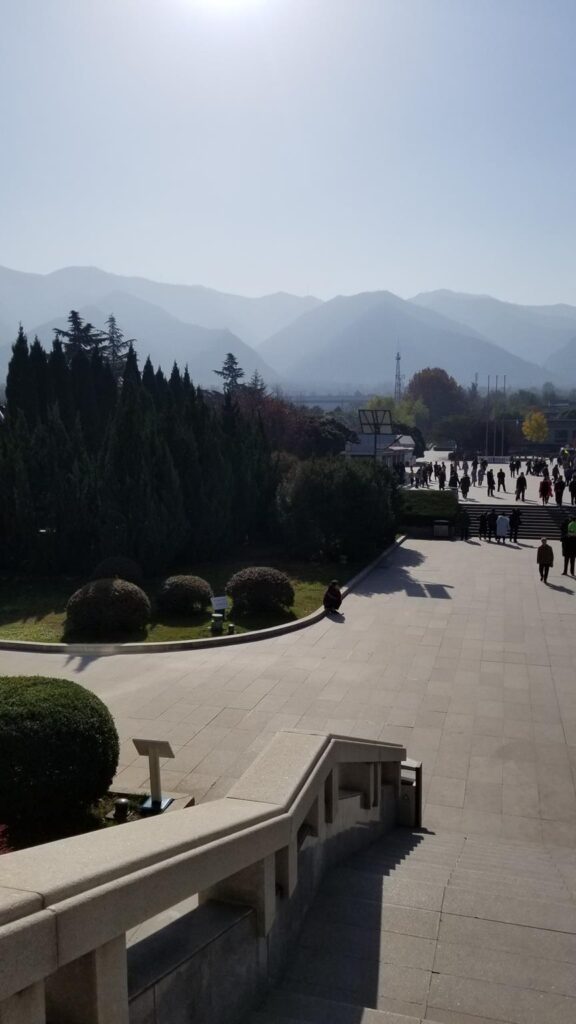
I took a taxi to the museum which cost 90 CNY, and took a bus back which was only 9 CNY. I would argue that the taxi is well worth it if you’re pressed for time because it was significantly faster than the bus. Now that the brief history lesson is over, by the time I got back there wasn’t a significant amount of time to do anything that I haven’t done already, so I spent some time exploring the surrounding area of the hotel I was staying at. This turned out to be a gigantic shopping complex. Instead of the traditional shopping mall you would find in North America where at most you would see a few floors, this was more like a maze of interconnected giant mall plazas that just never ended both horizontally and vertically. In fact, some floors were so high up that I eventually ended up getting vertigo.
I entered the mall on one side and walked around in a seemingly endless amount of twists and turns and by the time I got hungry and wanted to go back I somehow ended up at an exit a kilometer away. I’m not sure if this design is intentional or it just became like this but you could probably spend a week and still not be able to visit every shop in this complex – mind you, I’m fairly positive that this isn’t even one of the largest malls in this district, let alone the city. Each floor was dedicated to a certain category it seemed – jewelry, apparel, there was even a floor dedicated entirely to kids and another floor that was just one endless food court. It was ridiculous.
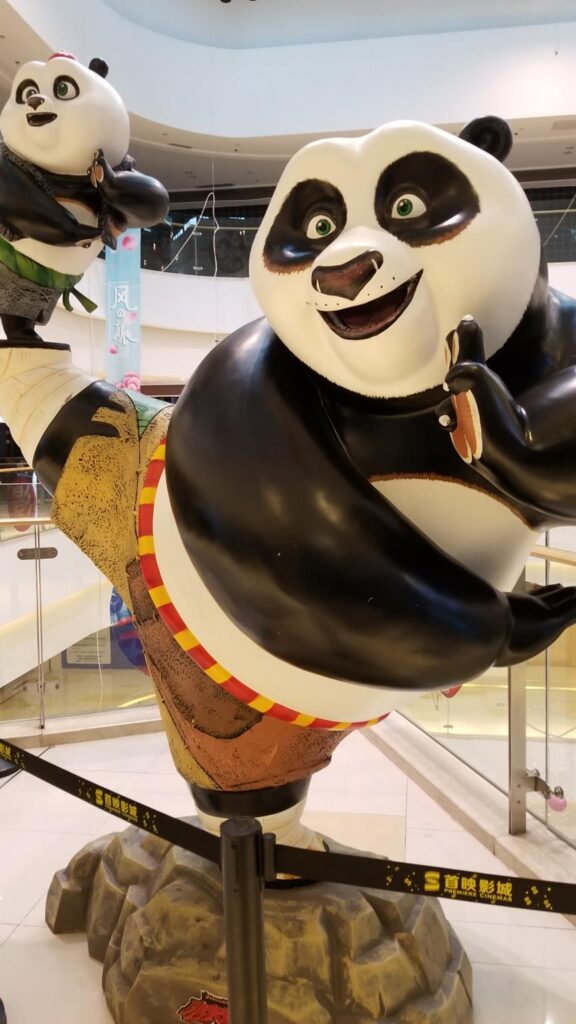
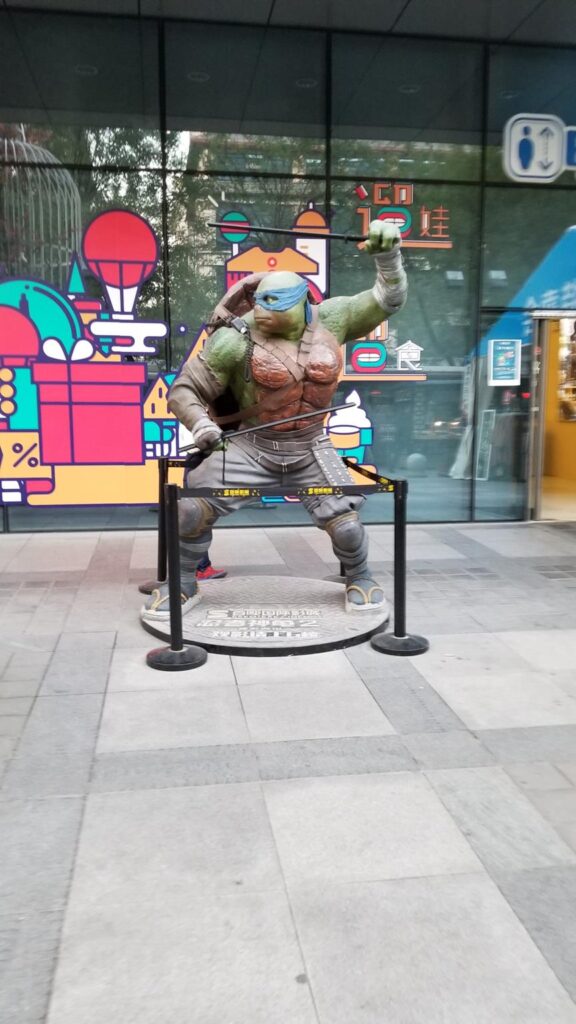
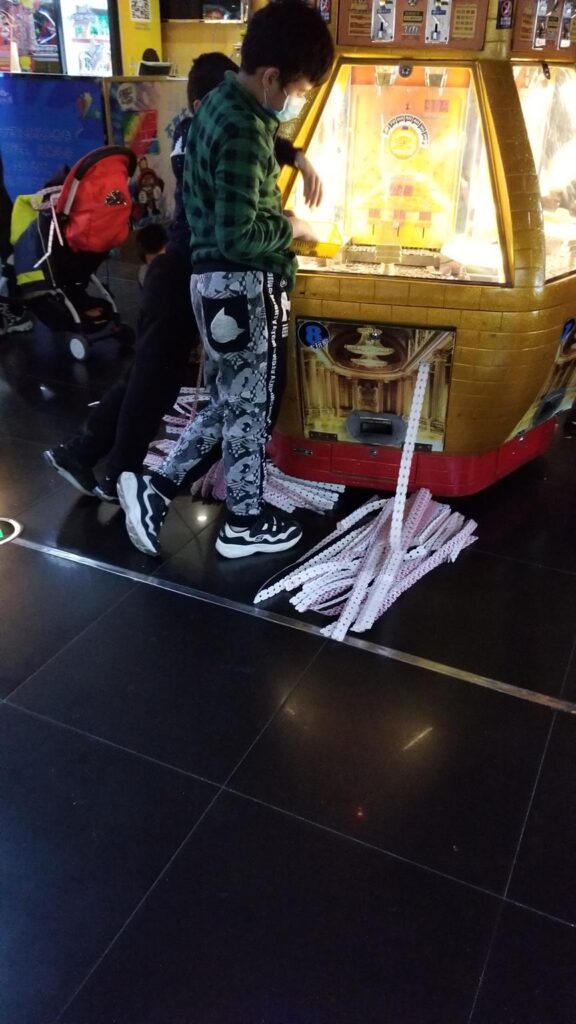
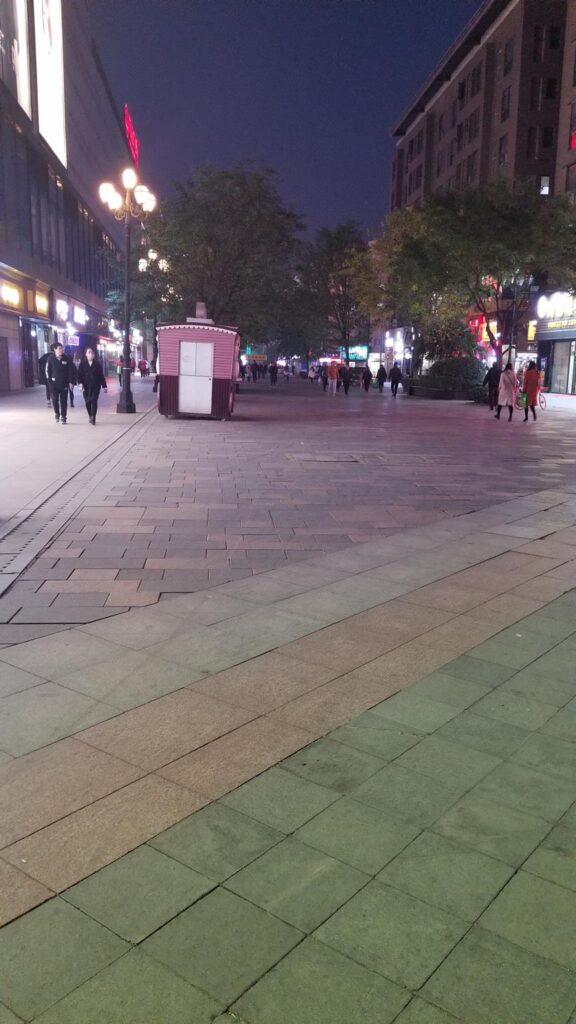
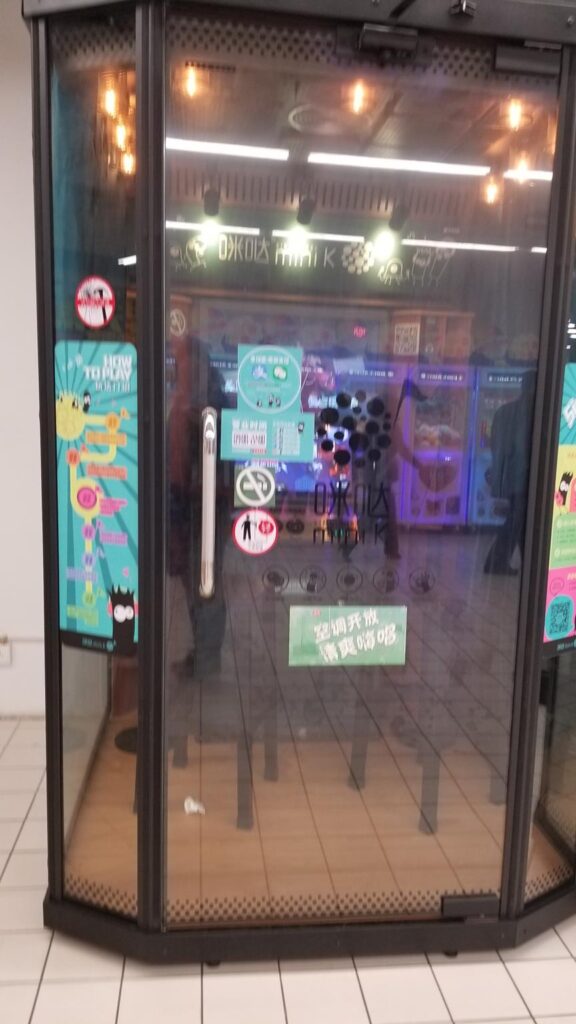
For my last dinner of this session in Xi’an, I was goaded into going to a Pizza Hut (they said it was an experience unlike any other). Strangely enough, rather than a takeout pizza parlor it actually turned out to be a sit down restaurant that served really weird flavors of pizza (durian anyone?) as well as upscale Italian dishes such as risotto. It was certainly a bizarre experience, sort of like stepping into an alternate reality where Gordon Ramsay’s Pub and Grill was somehow just a Burger King (if you’re not sure where I’m going with this analogy, it’s not a great analogy, don’t worry about it).
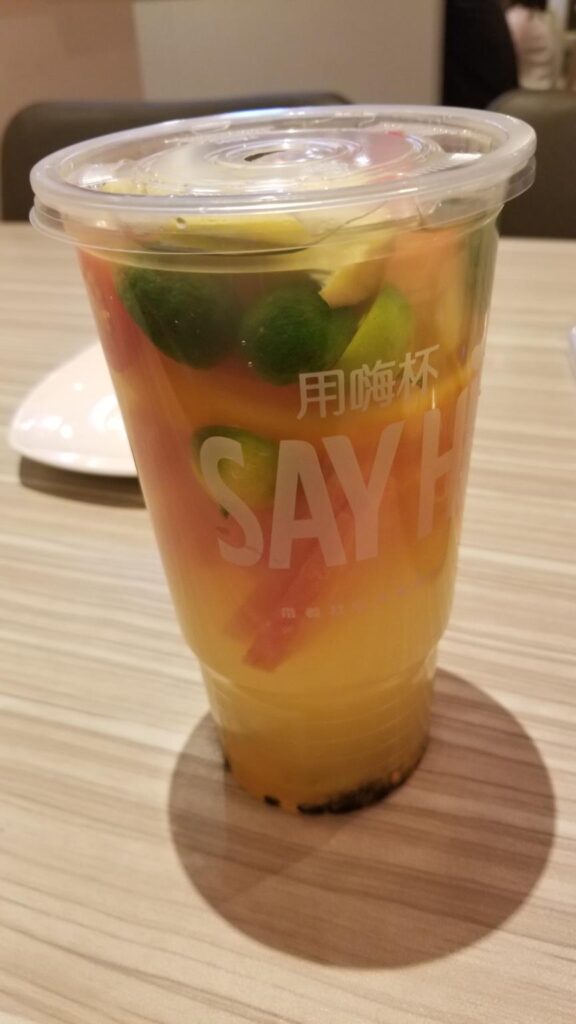
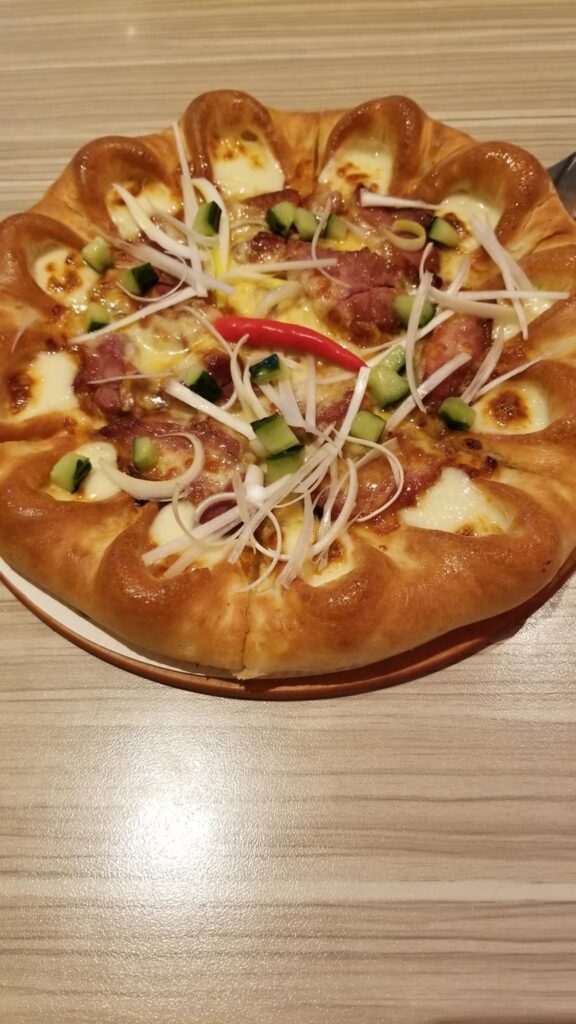
Either way, you’ll have to excuse me for now because I need to hit the gym to work off this pizza I just had.
P.S. Tomorrow is another province entirely!
